From Uxmal and the Mayan sites of the Puuc Route I continued my big counterclockwise loop around the Yucatan Peninsula south into Campeche, one of the three Mexican states on the peninsula. The landscape through a largely empty countryside of scrubby vegetation that looks like south Texas kept getting dryer and more burnt looking now well into the dry season here. The area around Hopelchen surprisingly contains landscapes that look a lot like the Great Plains states of the U.S. with big farms with fields watered by center-pivot irrigation systems, houses that look more like those in America and Canada than Mexico, and lots of heavy farm equipment. It turns out that there's a large population of Mennonites whose families immigrated from Canada in the region who control most of the commercial farming. Apparently there’s also an underground aquifer they can tap into because the Yucatan Peninsula is notorious for now having any surface water.
The area inland from Campeche city is known archaeologically as the Chenes Region
. The ruins of Mayan cities in the area have common architectural features that differ from those of other parts of the Mayan world like the Puuc region to the north or Rio Becque region to the south. There are many sites in the region that can be visited which a true aficionado of Mayan ruins could make a good day out of. Despite my general interest in archaeological ruins, I don’t really consider myself such an aficionado and decided only to stop at the largest one in the region – Edzna.
One great thing about Edzna, is that despite being a very significant site, it’s very off the beaten path and gets few tourists. I probably saw about a dozen visitors in my hour and a half there, half of which were part of one local Mennonite family who insisted they spoke no English when I asked the father to take a picture of me. I suspect they might not speak much Spanish either. Like many of the Mayan cities in the southern part of Yucatan, Edzna peaked between 600 and 900 A.D. before going into decline
. However, it remained a significant population center until about 1450 A.D., in contrast to many cities that were completely abandoned. The site was only rediscovered again in the early 1900s.
Like many of the archaeological sites in Mexico and Central America, Edzna is heavily reconstructed which gives much of it a quite neat appearance. It’s not like the U.S. where we insist on leaving our Indian ruins in the Southwest in places like Mesa Verde unaltered from the way they were found. At Edzna much of that work was done in the 1980s by refugees fleeing the civil war in Guatemala.
Edzna’s most famous building is the unique Temple of the Five Stories, a five story temple building that looks completely different from any of the structures I’ve seen at other sites. It forms one side of an ensemble of temples and pyramids around and open field on a raised structure that’s considered to be the center of the city. Across an open, now grassy, area from the Acropolis is what appears like a huge straight line of stone bleachers almost 500 feet long and many stones high
. From what might have been a podium used by rulers to make speeches to assembled masses at the top center, you can clap your hands once and the amazing acoustics are that the sound echoes around the entire site like thunder.
I found Edzna to be a quite special site, maybe because I had it nearly to myself. On the other hand, though, it was absolutely broiling hot there in the late afternoon, probably the hottest day I’ve experienced so far. I then continued on for about an hour into Campeche where I filled my nearly empty fuel tank. The gas station attendants asked me where I was from. When I said Los Estados Unidos, one grumbled and said, "Donald Trump". I insisted, “No me gusta Trump!”
Edzna - The Great Acropolis of the Chenes Mayans
Wednesday, March 01, 2017
 Edzná, Campeche, Mexico
Edzná, Campeche, Mexico
Other Entries
-
4Flores - Island City in a Lake in the Rainforest
Feb 1415 days prior Flores, Guatemalaphoto_camera34videocam 0comment 0
Flores, Guatemalaphoto_camera34videocam 0comment 0 -
5Tikal - Greatest Classical Mayan City
Feb 1514 days prior Tikal National Park, Guatemalaphoto_camera64videocam 0comment 0
Tikal National Park, Guatemalaphoto_camera64videocam 0comment 0 -
6Caye Caulker - Gateway to the Barrier Reef
Feb 1613 days prior Caye Caulker, Belizephoto_camera31videocam 0comment 0
Caye Caulker, Belizephoto_camera31videocam 0comment 0 -
7Cancun - World's Biggest Beach Resort
Feb 1910 days prior Cancun, Mexicophoto_camera57videocam 0comment 0
Cancun, Mexicophoto_camera57videocam 0comment 0 -
8Isla Mujeres - Escape from Cancun!
Feb 209 days prior Isla Mujeres, Mexicophoto_camera52videocam 0comment 0
Isla Mujeres, Mexicophoto_camera52videocam 0comment 0 -
9Coba - Another Day, Another Ruined Mayan City
Feb 218 days prior Coba, Mexicophoto_camera47videocam 0comment 0
Coba, Mexicophoto_camera47videocam 0comment 0 -
10Ruta de Flamingos in Northern Yucatan
Feb 227 days prior Rio Lagartos, Mexicophoto_camera58videocam 0comment 0
Rio Lagartos, Mexicophoto_camera58videocam 0comment 0 -
11Northern Yucatan - Ruins, Cenotes, and Agave
Feb 236 days prior Ek Balam Village, Mexicophoto_camera57videocam 0comment 0
Ek Balam Village, Mexicophoto_camera57videocam 0comment 0 -
12Valladolid - Colonial Heart of the Yucatan
Feb 245 days prior Valladolid, Mexicophoto_camera57videocam 0comment 0
Valladolid, Mexicophoto_camera57videocam 0comment 0 -
13Casa de Los Venados - Mexican Folk Art
Feb 245 days prior Valladolid, Mexicophoto_camera43videocam 0comment 0
Valladolid, Mexicophoto_camera43videocam 0comment 0 -
14Chichen Itza - One of the Modern Wonders of World
Feb 254 days prior Chichén Itzá, Mexicophoto_camera61videocam 0comment 0
Chichén Itzá, Mexicophoto_camera61videocam 0comment 0 -
15Izamal - The Convento de San Antonio de Padua
Feb 254 days prior Izamal, Mexicophoto_camera52videocam 0comment 0
Izamal, Mexicophoto_camera52videocam 0comment 0 -
16Merida - Colonial Capital of Yucatan Peninsula
Feb 263 days prior Merida, Mexicophoto_camera80videocam 0comment 0
Merida, Mexicophoto_camera80videocam 0comment 0 -
17Hacienda Sotuta de Peon - Story of Henequen
Feb 272 days prior Sotuta de Peón, Mexicophoto_camera57videocam 0comment 0
Sotuta de Peón, Mexicophoto_camera57videocam 0comment 0 -
18Ruta de Los Conventos - Out in the Countryside
Feb 272 days prior Mani, Mexicophoto_camera49videocam 0comment 0
Mani, Mexicophoto_camera49videocam 0comment 0 -
19The Puuc Route - Grutas de Loltun, Labna, Sayil, K
Feb 281 day prior Kabah, Mexicophoto_camera70videocam 0comment 0
Kabah, Mexicophoto_camera70videocam 0comment 0 -
20Uxmal - UNESCO World Heritage Mayan City
Mar 01earlier that day Uxmal, Mexicophoto_camera94videocam 0comment 0
Uxmal, Mexicophoto_camera94videocam 0comment 0 -
21Edzna - The Great Acropolis of the Chenes Mayans
Mar 01 Edzná, Mexicophoto_camera35videocam 0comment 0
Edzná, Mexicophoto_camera35videocam 0comment 0 -
22Campeche - Fortified Colonial Seaside City
Mar 021 day later Campeche, Mexicophoto_camera65videocam 0comment 0
Campeche, Mexicophoto_camera65videocam 0comment 0 -
23Balamku - Mayan Ruins Rediscovered in 1990
Mar 032 days later La Selva, Mexicophoto_camera27videocam 0comment 0
La Selva, Mexicophoto_camera27videocam 0comment 0 -
24Calakmul - Massive Mayan City in the Rainforest
Mar 043 days later Calakmul, Mexicophoto_camera43videocam 0comment 0
Calakmul, Mexicophoto_camera43videocam 0comment 0 -
25Tulum - Where the Mayan World Meets the Sea
Mar 054 days later Tulum, Mexicophoto_camera52videocam 0comment 0
Tulum, Mexicophoto_camera52videocam 0comment 0 -
26Puerto Morelos - Peaceful Old School Beach Mexico
Mar 065 days later Puerto Morelos, Mexicophoto_camera14videocam 0comment 0
Puerto Morelos, Mexicophoto_camera14videocam 0comment 0 -
27Foods of the Yucatan Peninsula & Mayan World
Mar 076 days later Cancun, Mexicophoto_camera54videocam 0comment 0
Cancun, Mexicophoto_camera54videocam 0comment 0

 Edzná, Campeche, Mexico
Edzná, Campeche, Mexico
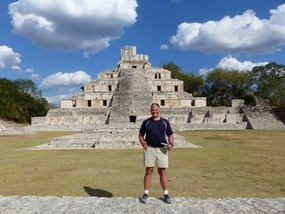
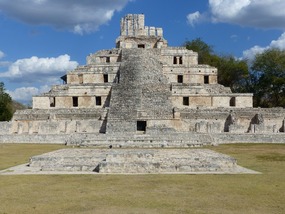



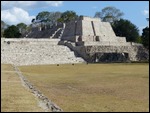
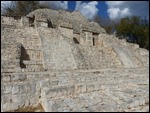
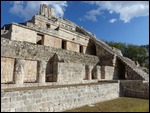
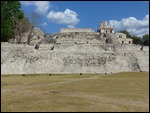
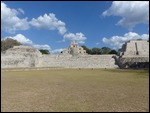
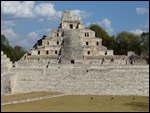
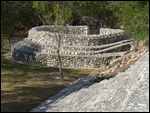

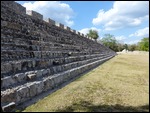
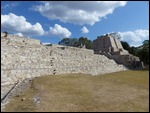

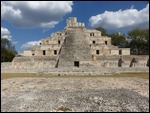

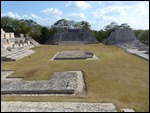
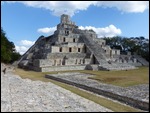
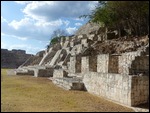
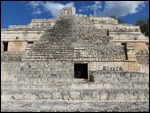
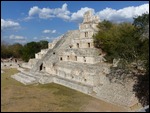
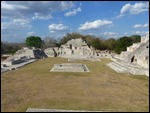
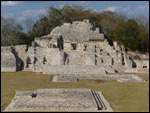
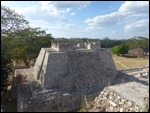
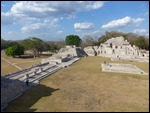
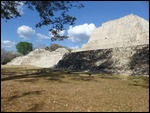
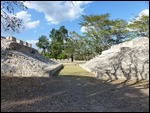
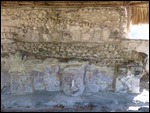
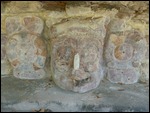
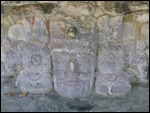
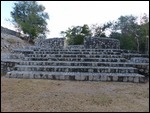
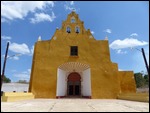

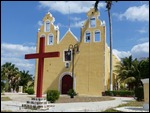

2025-05-22